Tamil Nadu is one of the most temple-rich states in India, known for centuries-old shrines that are deeply tied to both culture and architecture. These temples are more than religious structures. They serve as historical landmarks, places of devotion, and examples of fine Dravidian construction. Below are ten of the most important temples in Tamil Nadu, each carrying a distinct identity and tradition. For each, you’ll find information about its features, location, time of visit, appropriate attire, and significant events.

Top 10 Famous Temples in Tamil Nadu
1. Meenakshi Amman Temple – Madurai
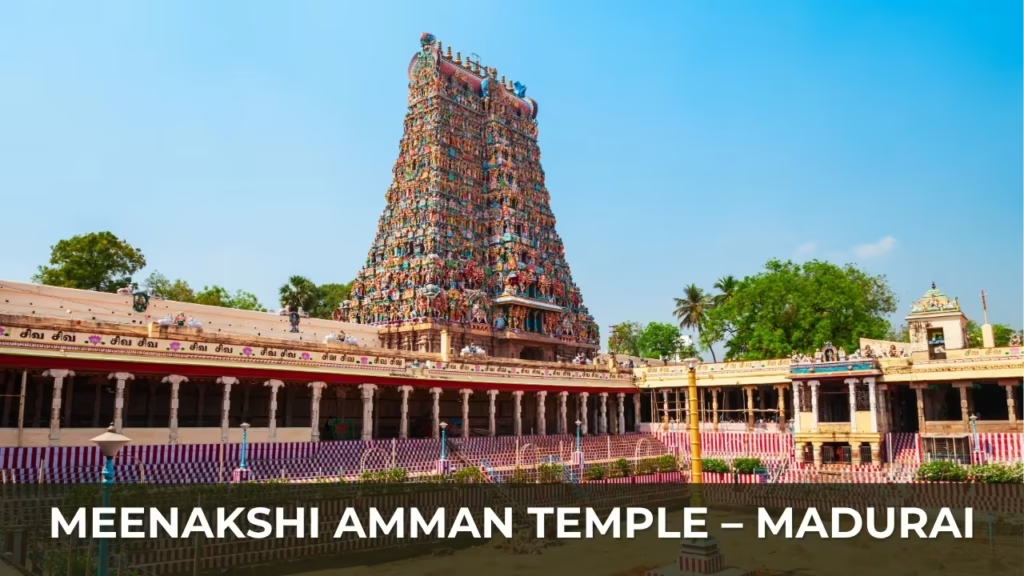
Dedicated to Goddess Meenakshi and Lord Sundareswarar, this temple is known for its 14 towering gopurams and thousands of colorful sculptures. The Meenakshi Amman temple complex is expansive, with a symmetrical layout and an art museum showcasing religious artifacts. The Thousand Pillar Hall, built with granite, is a remarkable structural feature.
Best Time to Visit:
October to March is preferable due to cooler weather.
Dress Code:
Visitors are expected to dress modestly. Men generally wear dhotis or pants with shirts. Women commonly wear sarees or salwar kameez.
Special Occasions:
The Chithirai Festival in April celebrates the celestial wedding of Meenakshi and Sundareswarar. It draws a large number of devotees every year.
Location:
Madurai city, accessible via road, rail, and air connections.
2. Brihadeeswarar Temple – Thanjavur
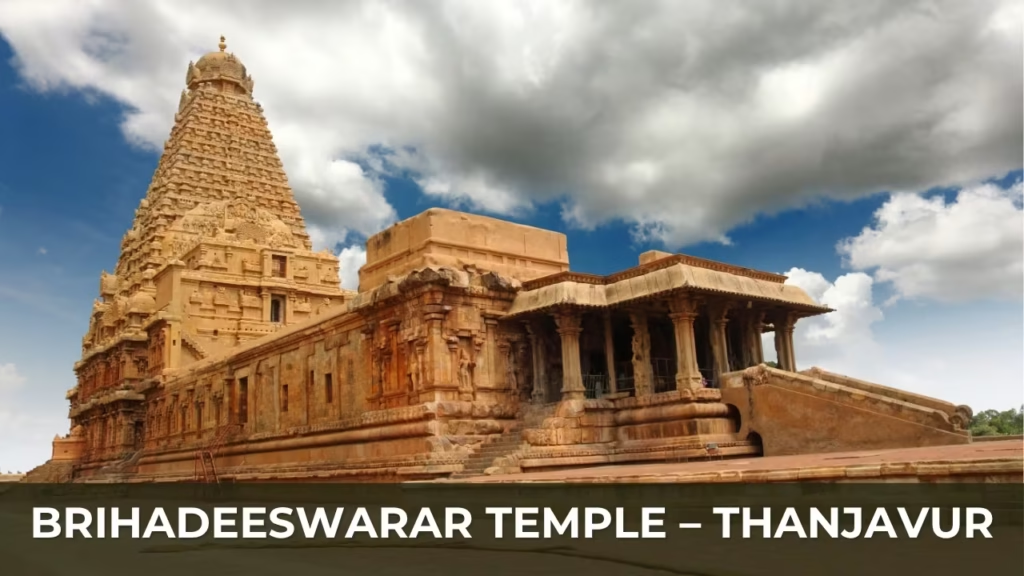
This 11th-century temple was constructed by Chola ruler Raja Raja Chola I and is now a UNESCO World Heritage Site. It is dedicated to Lord Shiva and features a 66-meter-high vimana made entirely of granite. The temple stands as a fine example of Chola architecture, with carvings, frescoes, and inscriptions that give insights into the era.
Best Time to Visit:
The period from November to February is ideal due to mild temperatures.
Dress Code:
Only traditional attire is allowed. Men typically wear veshtis or trousers. Women are required to dress in sarees or long skirts.
Special Occasions:
Maha Shivaratri is celebrated with rituals and music events. The temple’s anniversary celebrations are also significant.
Location:
Thanjavur, about 60 km from Tiruchirappalli Airport.
3. Ramanathaswamy Temple – Rameswaram
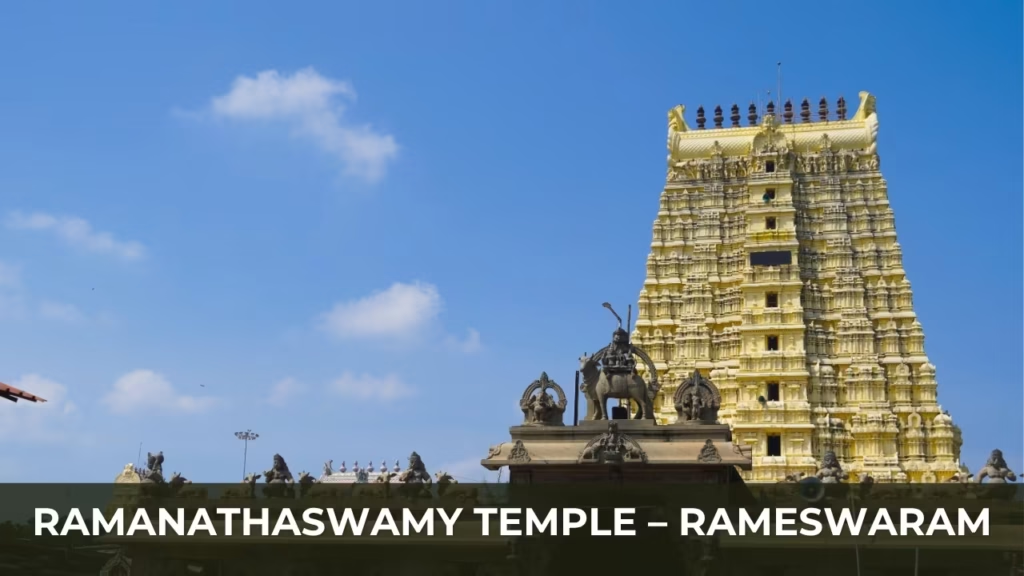
This temple houses one of the twelve Jyotirlingas and is associated with Lord Rama’s journey to Lanka. It is known for having the longest temple corridor in India, stretching over 1,200 meters. The temple contains several sacred water tanks used for ritual cleansing.
Best Time to Visit:
October to April, when the weather is comfortable for pilgrimage and sightseeing.
Dress Code:
Traditional Indian clothing is mandatory. Men are not allowed to wear shirts inside the sanctum area. Women are advised to wear full-length clothing.
Special Occasions:
Maha Shivaratri, Thai Amavasya, and the Arudhra Darshan are important religious days at the temple.
Location:
Located on Rameswaram Island, connected to the mainland by the Pamban Bridge.
4. Kapaleeshwarar Temple – Chennai
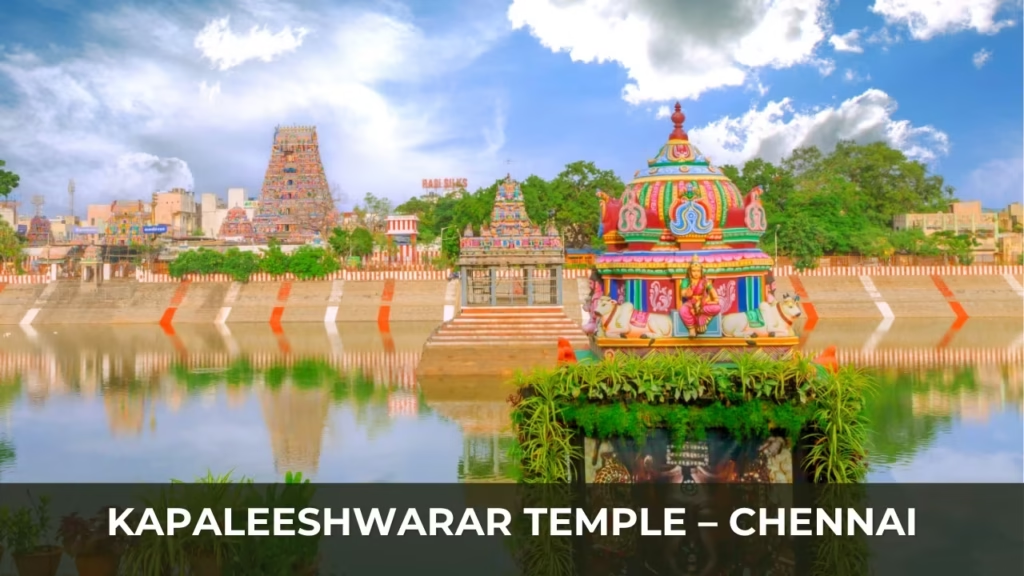
Built in the Dravidian style, this temple is devoted to Lord Shiva and his consort Goddess Karpagambal. The temple is an important cultural site in Mylapore, featuring a traditional tank, a variety of shrines, and a large gopuram with intricate carvings.
Best Time to Visit:
December to February, which coincides with the Margazhi month known for devotional music events.
Dress Code:
Modest, traditional clothing is recommended. Men wear dhotis or trousers, while women wear sarees or churidars.
Special Occasions:
The Panguni Festival in March or April includes a ceremonial procession and is attended by many Chennai residents and visitors.
Location:
Mylapore area in Chennai city, accessible by road and suburban train.
5. Shore Temple – Mahabalipuram
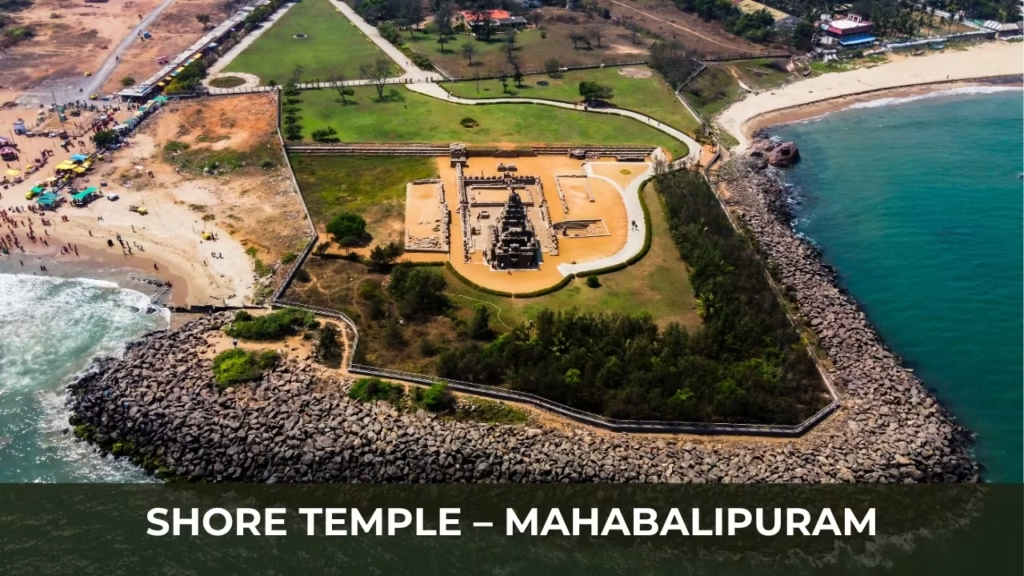
This temple stands on the shores of the Bay of Bengal and is constructed from granite blocks. Dating back to the 8th century, it contains shrines dedicated to both Shiva and Vishnu. The layout and coastal setting make it visually striking.
Best Time to Visit:
November to February, when the seaside climate is pleasant.
Dress Code:
Visitors are expected to wear respectful clothing. There is no strict enforcement, but overly casual outfits should be avoided.
Special Occasions:
The Mamallapuram Dance Festival in January features classical dance performances in front of the temple.
Location:
Mahabalipuram (also known as Mamallapuram), about 60 km south of Chennai.
6. Ekambareswarar Temple – Kanchipuram
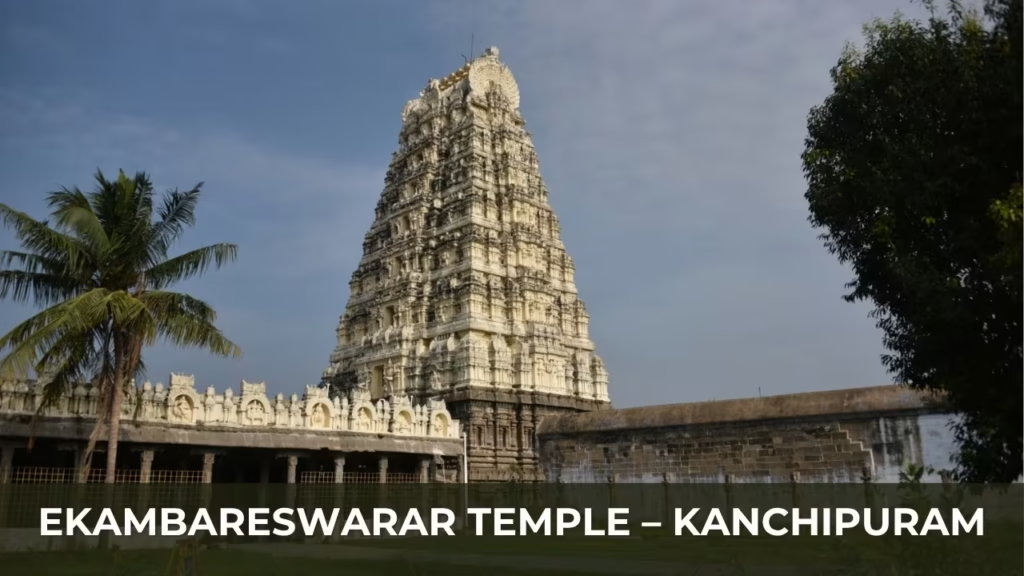
This is one of the Pancha Bhoota Stalas, representing the earth element. Dedicated to Lord Shiva, the temple complex covers 25 acres and contains a 59-meter gopuram. The temple also houses a mango tree believed to be over 3,000 years old, symbolizing four Vedas.
Best Time to Visit:
December to March is comfortable for temple visits and festivals.
Dress Code:
Only traditional wear is allowed. Western outfits are not accepted inside the temple.
Special Occasions:
Panguni Uthiram and Maha Shivaratri are observed with rituals and public participation.
Location:
Kanchipuram city, known for both temples and silk weaving.
7. Murugan Temple – Palani
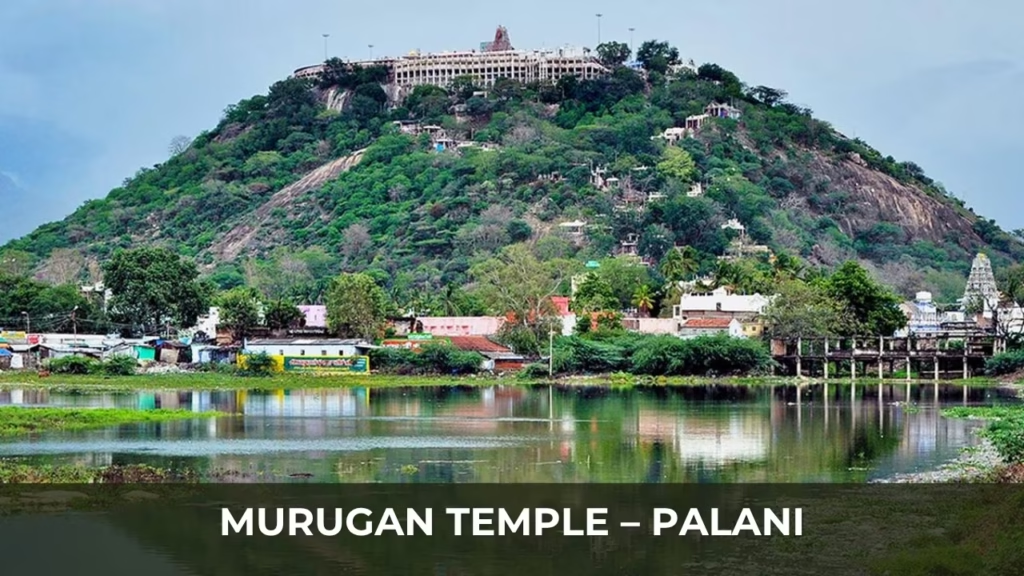
This temple is located on a hill and is one of the six major abodes of Lord Murugan. The deity here is said to be made from navapashanam, a rare mixture of herbs and minerals. Pilgrims often climb 600+ steps to reach the main shrine.
Best Time to Visit:
January to April and August to October offer suitable weather for the hill climb.
Dress Code:
Men usually wear dhotis or veshtis, and women wear sarees or salwar suits. Shorts and sleeveless outfits are not allowed.
Special Occasions:
Thaipusam and Panguni Uthiram are major festivals with processions and devotional songs.
Location:
Palani in Dindigul district, accessible by rail and road.
8. Nataraja Temple – Chidambaram
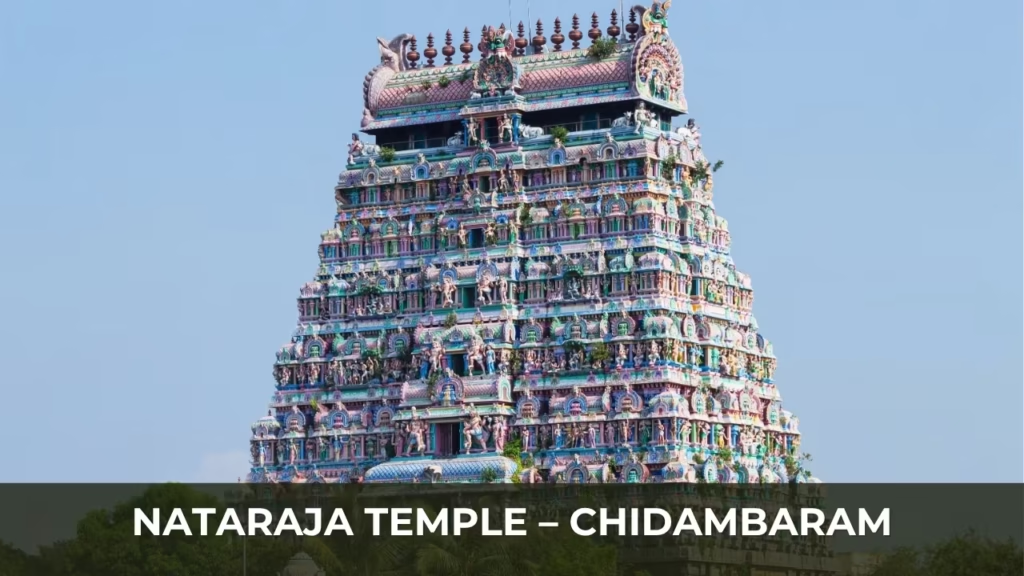
The temple is devoted to Lord Shiva as Nataraja, symbolizing cosmic dance. The architectural layout represents the five elements, with the Chidambara Rahasyam denoting the ‘space’ element. The temple is an active cultural hub for classical dance and music.
Best Time to Visit:
December to February is suitable due to cooler weather and coinciding festivals.
Dress Code:
Traditional clothing is required. Sleeveless tops and tight-fitting clothes are discouraged.
Special Occasions:
The Margazhi Thiruvadirai and the Natyanjali Dance Festival during Maha Shivaratri draw artists and spiritual practitioners.
Location:
Chidambaram town, around 220 km south of Chennai.
9. Adi Kumbeswarar Temple – Kumbakonam
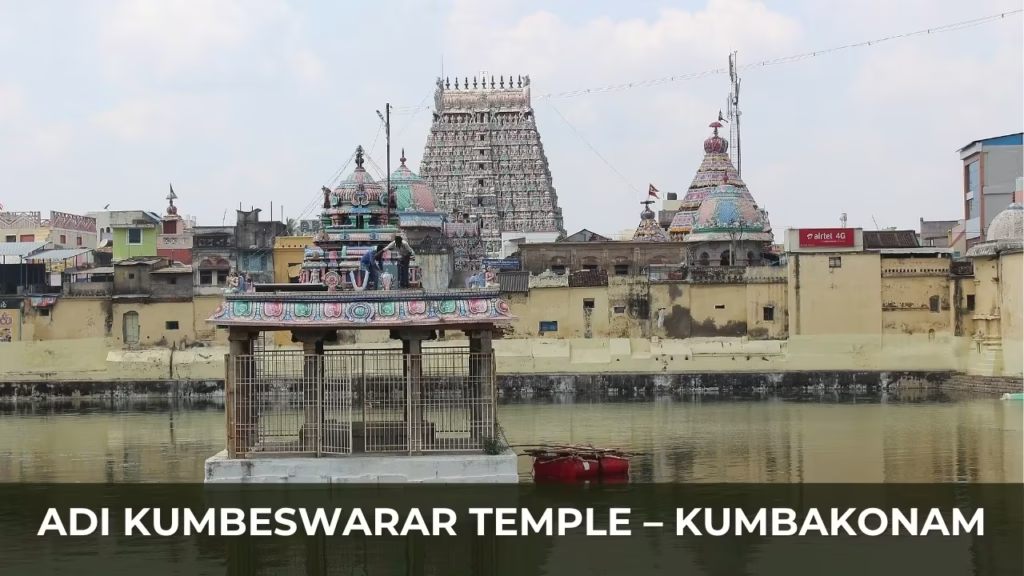
This ancient Shiva temple is linked to the Mahamaham festival and contains impressive sculptures and detailed pillars. It has a sacred tank nearby and is part of the city’s extensive temple circuit.
Best Time to Visit:
November to February, which avoids the high summer temperatures.
Dress Code:
Traditional wear is mandatory for temple entry.
Special Occasions:
Mahamaham (once every 12 years) and Maha Shivaratri are celebrated with extensive rituals.
Location:
Kumbakonam, a temple town with numerous other shrines.
10. Srirangam Temple – Tiruchirappalli
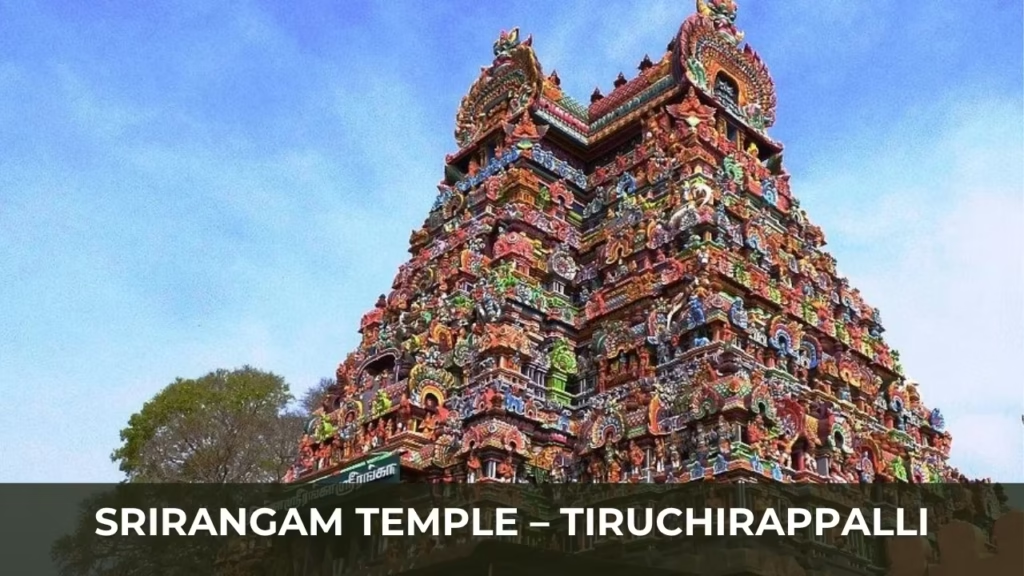
Sri Ranganathaswamy Temple is dedicated to Lord Vishnu and is one of the 108 Divya Desams. It covers over 150 acres and contains seven concentric enclosures and 21 towers. The temple is managed by a religious board and remains active in daily worship and large-scale rituals.
Best Time to Visit:
December to February is ideal, especially during the festival season.
Dress Code:
Only traditional Indian clothing is permitted. Western wear is restricted inside sanctified zones.
Special Occasions:
Vaikunta Ekadasi and the annual 21-day Vaikunta Ekadasi Festival in December–January are key events.
Location:
Srirangam Island, part of Tiruchirappalli city.
